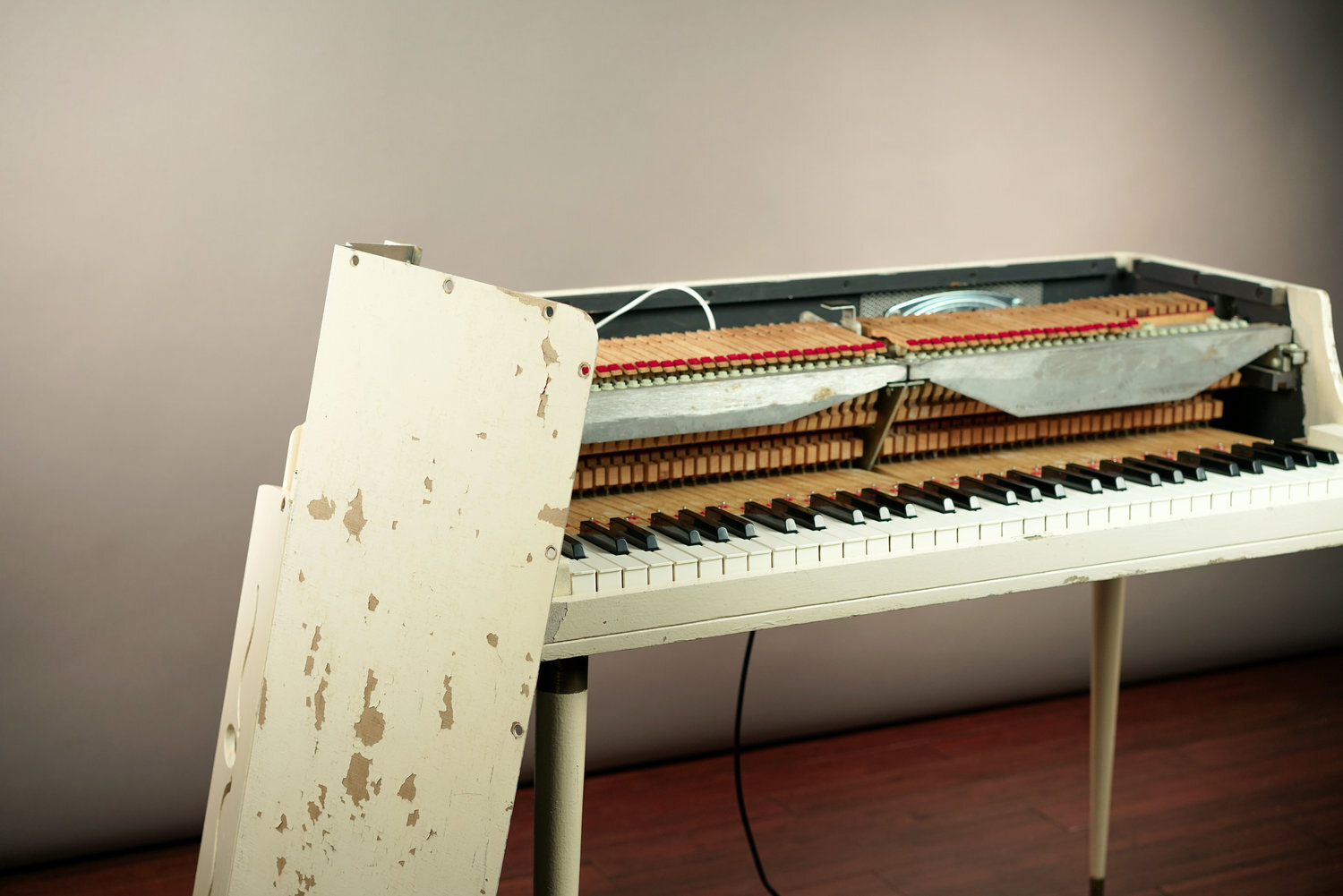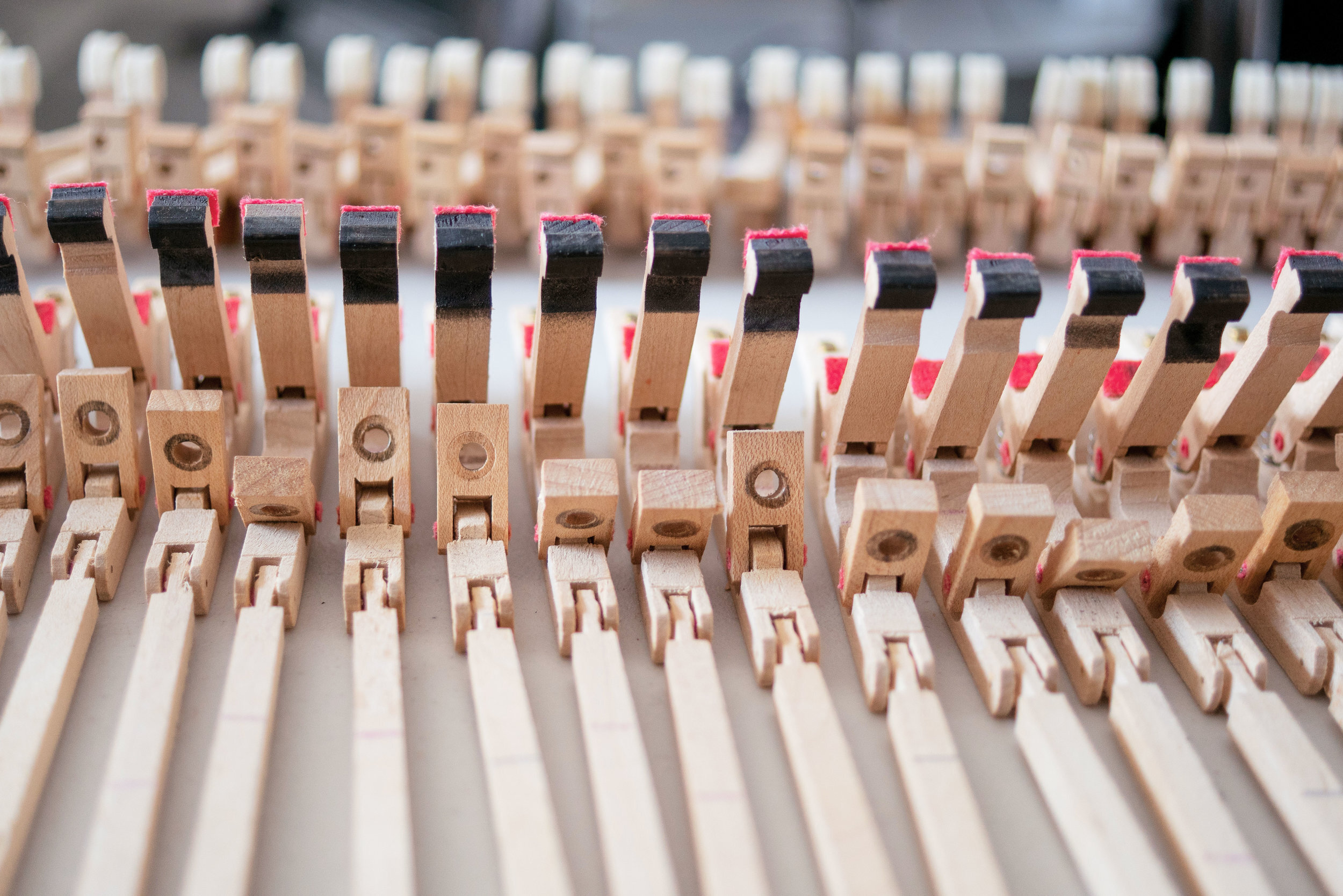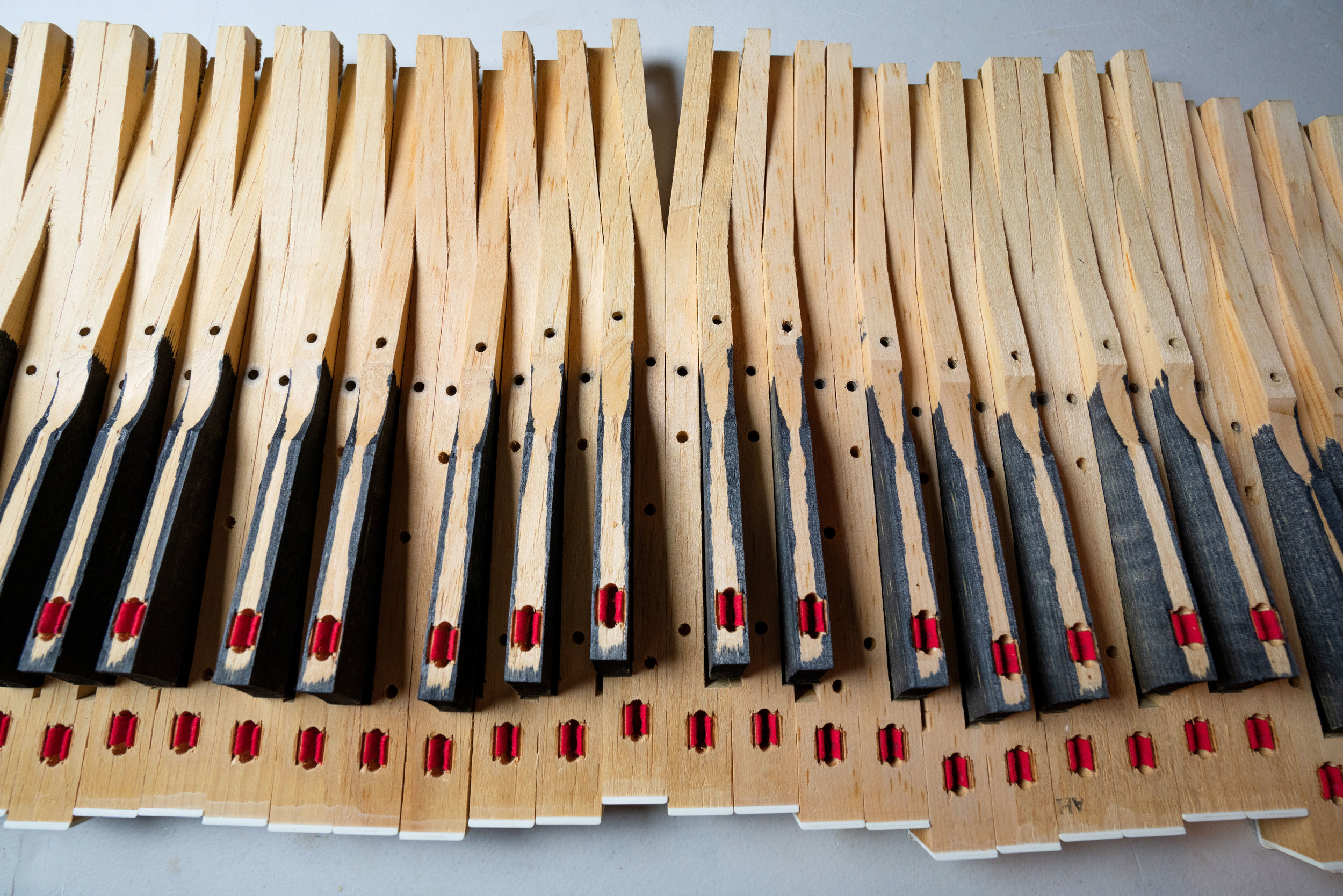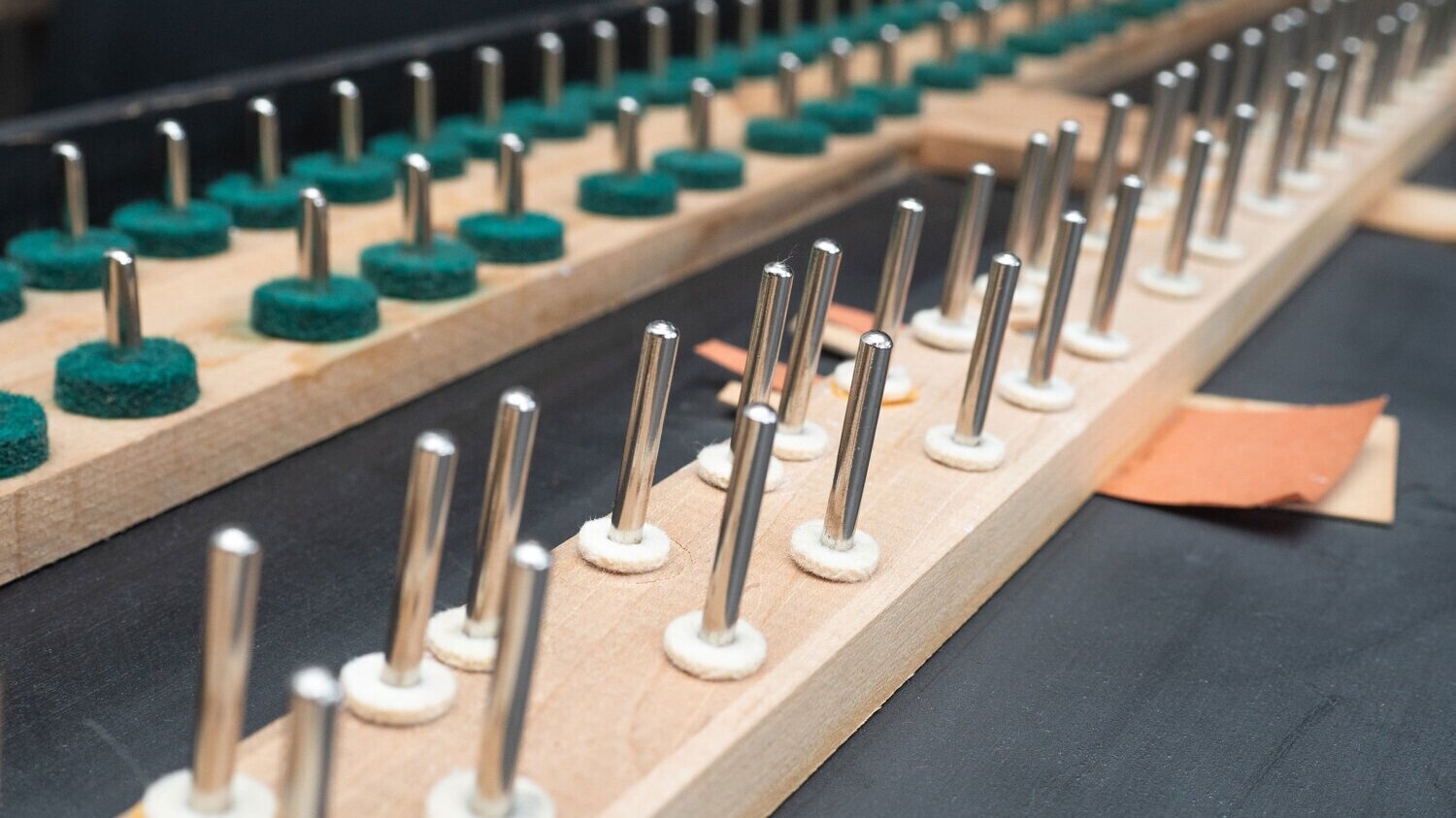How to replace a Wurlitzer electronic piano reed
Reeds (on the right) installed on a Wurlitzer 200A.
Replacing a reed on your Wurlitzer electronic piano is not difficult. There are a few important things to keep in mind for the best results. One, the reed needs to be as close to perfectly centered in the ‘comb-shaped’ pickup as possible. Two, the reed has a bit of wiggle room on the reed screw, and where the reed sits (favoring forwards or backwards) impacts the intonation. Three, the tightness of the reed screw matters. Four, there are different sized reeds for the different models of Wurlitzer electronic pianos, as well as the different registers of your piano. Five, the solder ‘pyramid’ on the tip of the reed, which is the main area of tuning the reed, should be a symmetrical pyramid for the best sound (but this may not be of importance to you if you are buying a pre-tuned reed).
Reeds in a 140 are installed just like a 200/200A
If you know all of the above key points you can install a reed just like a pro. If you need a refresher on how to center, position, tighten and select your reed, please read on.
CENTERING THE REED
A comb shaped pickup runs the length of of your electronic piano, and the reeds protrude into each notch in the pickup. The tolerance between the pickup and the reed is very narrow, so it is easy to accidentally install the reed touching the pickup, or too close to one side. If your reed is touching the pickup this will short out the pickup and cut the sound entirely (and potentially cause harm to the amp). If the reed is so close that it makes contact when struck by the hammer you will hear loud popping sounds. If the reed favors one side of the pickup it may play very loudly, or have uneven resonance. If the reed is centered perfectly, it will sound great!
POSITIONING THE REED (FORWARDS OR BACKWARDS)
The reed screw goes through a hole in the reed that is just slightly larger than the gauge of the screw. This gives the reed some play on where it exactly it is mounted when the screw is fully tightened. If the reed is extended further away from the harp (and closer to the pickup) the will lower the pitch of the reed. And conversely, if the reed is pulled all the way back toward the harp (and away from the pickup) this will sharpen the pitch. The positioning of the reed alone will give you an overall swing of about 8 cents.
TIGHTNESS OF THE REED SCREW
The tighness of the reed screw will affect the pitch of the reed. Tightness is not a good way to tune your reed, but it is a good indicator of whether your reed screw is tight enough. A loose reed screw will lower the pitch of your reed. You should tighten the reed until the pitch no longer goes up. Be careful not to over tighten and risk snapping the reed screw head.
REED SIZES
We will leave an in depth explanation of reed sizes and how the vary by model for another article. It is, however, important to know that in general the 112, 120/700, early 140 and later 140/200 models have reeds with differences. Equally as important, there are six registeres per keyboard, and each register has it’s own reed sets. So when ordering a reed replacement, be sure that you are specifying the model of your electronic piano and note number you need.
ABout the solder pyramid
The reeds in a Wurlitzer electronic piano get smaller as they go up in pitch (to the right). More material equals lower pitch (think xylophone). Since it is more difficult to perfectly size and tune hard steel to perfect pitch, solder (mostly softer metals like tin, silver, copper) is added to end of the reed, and this material is adjusted to zero in the reed’s pitch.
Further Reading
Browse all of our articles on restoring vintage gear. Or, click on an image below.







